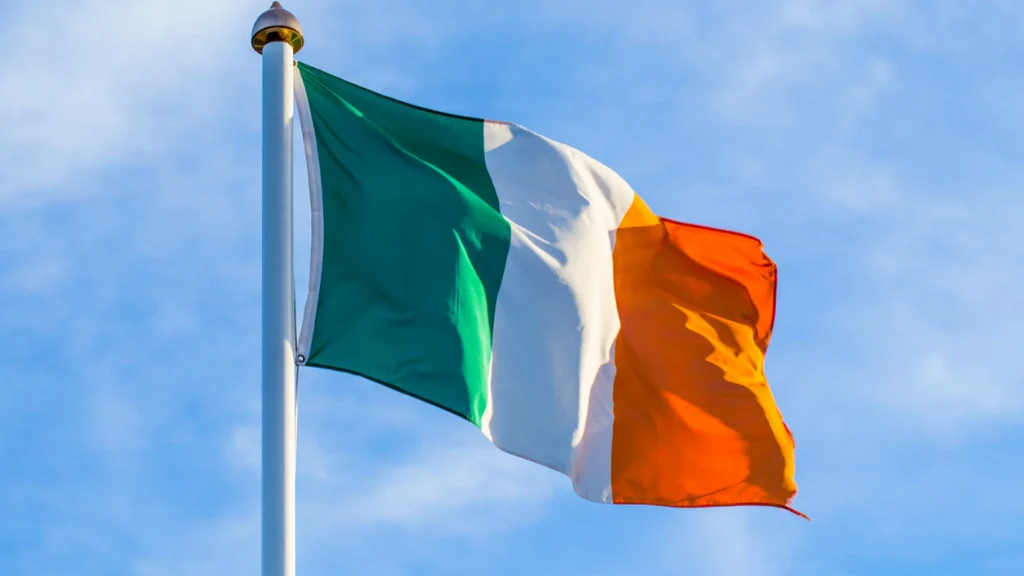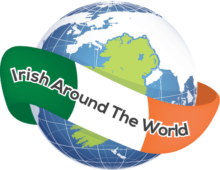Many people visit Ireland and proudly see the Irish flag hanging around the country. But many people don’t know the story and the meaning behind it. Well, today, I will share a brief bit of Irish history of the Irish flag.

Let’s get to all the history of the Irish flag:
It is starting with its origin. The tricolour design of the Irish flag is believed to have been inspired by the French Revolution’s tricolour flag. It was first introduced by Thomas Francis Meagher, an Irish nationalist and leader of the Young Ireland movement, in 1848. Meagher is often credited with popularizing the flag.
Exile and Activism: After the rebellion’s defeat, Meagher was convicted of sedition and transported to Tasmania (then known as Van Diemen’s Land) as a political prisoner. Eventually, he escaped and went to the United States, where he advocated for Irish independence and became a prominent speaker and writer.
But what does the tricolour on the Irish flag represent?

The colours of the flag have symbolic meanings. Green is associated with predominantly Roman Catholics, orange represents the Protestant Unionist community, and white represents the aspiration for peace and harmony between the two communities. This flag is nicknamed the Irish Tricolour, as each section of the flag is the same size as the other giving equal space and rights to all.
The Irish flag’s first time being flown.
It was on On March 7, 1848. It proudly flew for eight days straight until the British took it down. But ultimately, the flag gained prominence during the struggle for Irish independence in the early 20th century. It symbolised unity and national identity for those seeking self-governance and freedom from British rule.
Ironically the Irish flag often gets confused with the Ivory Coast flag. Which is essentially the same flag, just the opposite way around.
Official Adoption of the Irish Flag:
The tricolour flag was officially adopted as the national flag of Ireland in 1937, being given constitutional status under the 1937 Constitution of Ireland. When the Irish Constitution came into effect. It is the national flag of both the Republic of Ireland and Northern Ireland.
Fun Irish fact: Ireland is also the only country in the world to have a harp as the national instrument of the world and the Shamrock as the national flower of Ireland.
The Easter Rising 1916 and The Irish Flag.
During the Easter Rising (1916), the Irish Republic Flag flew alongside the Irish Tricolour over the General Post Office in Dublin at the centre of the Rising, leading to the establishment of the Irish Free State six years later. The large lettering on the flag displayed the rebels’ desire for an independent Ireland.
In 2016, to commemorate the centenary of the Easter Rising, every school in Ireland was given an Irish flag as a symbol of remembrance. Members of Ireland’s defence forces visited primary schools nationwide to educate students about the flag’s history, significance, and how to take proper care of it.
Are you looking to buy an Irish flag for St Patrick’s Day? Show your Irish pride all year long with high-quality Ireland Flags with this collection on Amazon here. You can even 5ft long Irish flags.
Final thoughts on the Irish flag and its meaning
As you can see, the Irish flag means a lot to Irish people. It has been flown proudly for over 100 years. And no matter if you travel to Ireland or see it hanging proudly in an Irish embassy, you will know a bit more about the history of the Irish flag.
Some frequently asked questions about the Irish flag and its history:
What was the Irish flag before the tricolour?
Before the tricolour, Ireland had an all-green flag with a harp in the middle, the country’s national symbol. It is believed to have flown as far back as 1642. While the tricolour had gained traction as a symbol for Ireland until the 1916 Easter Rising, the primary flag of Ireland was green with a harp in the centre.
What’s the difference between the Irish flag and the Ivory Coast flag?

Simple: Irish flag is green, white and orange. At the same time, the Ivory Coast flag is orange, white and green. Very easy to mix up if you only take a glance.
Are the Irish flag colours gold or orange?
This seems to be a ubiquitous question, but the colour of the Irish flag is, in fact, orange, not gold.
Why do the Irish say green, white and gold?
The Irish sometimes use the phrase “green, white, and gold” to refer to the Irish flag’s colours, which are green, white, and orange. However, it’s worth noting that the phrase “green, white, and gold” with the inclusion of gold instead of orange is not the traditional way to describe the colours of the Irish flag.
